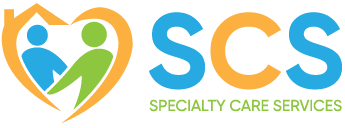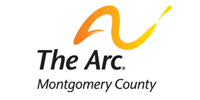COPD Home Care and In-Home Nursing
Maryland, Washington, D.C., and Northern Virginia
24/7 Nurse Availability
Free In-Home Assessments
Over 25 Years of Experience
Hours:
Request Call Back
Hero Request Form
Thank you for contacting us.
We will get back to you as soon as possible.
Please try again later.
Comprehensive COPD Home Care Services
When COPD makes everyday tasks difficult, our in-home care team is here to help. We provide expert respiratory care, oxygen and medication support, and daily assistance where you’re most comfortable.
When breathing is hard, everything is hard. If COPD (chronic bronchitis, emphysema, or both) has turned everyday activities like showering, cooking, or walking to the mailbox into breathing challenges, you don’t have to do it alone. Our COPD In-Home Nursing & Care Program brings skilled, respiratory-savvy support to your home so symptoms are steadier, medications make sense, and your days feel more predictable and safer.
Who We Serve
This service is designed for adults with higher-severity COPD (and the loved ones who help them) who want consistent and effective medical help at home.
We’re a strong fit for people who:
- Struggle with daily symptoms like shortness of breath, coughing, mucus buildup, fatigue, or frequent “bad days.”
- Are older or have multiple health conditions. COPD is rarely the only diagnosis. We coordinate care around any other health conditions, including heart failure, diabetes, neuropathy, sleep apnea, osteoporosis/fall risk, and more, so your whole picture is managed, not just your lungs.
- Have complex meds or equipment. From multi-inhaler regimens and nebulizer treatments to home oxygen, pulse-ox checks, and (when prescribed) BiPAP/NIV, we help with technique, timing, cleaning, adherence, and titration.
- Recently had an exacerbation or hospital stay. The first 30–90 days after a flare-up are risky. We start quickly after discharge, reconcile medications, set up red-flag symptom plans, and coordinate follow-ups to prevent a rebound ER visit. Large U.S. studies show about 20% of those with COPD are readmitted within 30 days, so we have protocols focused on that window. [1]
- Have trouble with daily activities. When bathing, dressing, cooking, or cleaning drains your energy, our caregivers build an energy-saving routine with rest breaks, safe transfers, and meal prep that fits your nutrition plan.
Home health care for COPD is common: About 20% of those with COPD who are discharged from the hospital or emergency department start to utilize home health care services. [2]
How We Provide Care
In-Home Nursing and Medical Care (RN-Led)
- Hospital discharge COPD care (24–72 hours after discharge): Discharge-paper review, medication reconciliation, symptom check, inhaler/nebulizer set-up, pulse-ox/weight log, and appointment scheduling with pulmonology/PCP.
- Medication management & technique: Utilizing inhalers (spacer use, timing vs. neb), nebulizer cleaning schedules, prednisone/antibiotic “rescue” plans per MD, interaction checks, and adherence coaching.
- Vitals & monitoring: Oxygen saturation (at rest/with activity), respiratory rate, heart rate/BP, temperature, and symptom zones. We document trends and escalate per protocol.
- Oxygen & NIV support: Safe use of home oxygen, conserving devices, tubing safety, and (if ordered) CPAP/BiPAP/NIV adherence and mask fit coaching.
- Pulmonary rehab enrollment help: We coordinate center-based or home-based pulmonary rehabilitation when appropriate—an underused but high-value therapy linked to better outcomes. [3]
Personal Home Care (Aide Support)
- Activities of daily living support: Bathing, dressing, grooming, light housekeeping, laundry, and safe meal prep with rest breaks and pacing.
- Nutrition coaching: Hydration cues, weight-loss nutrition if needed, and low-effort meal ideas.
- Errands and escorts: Pharmacy runs and safe accompaniment to pulmonology, PCP, or rehab visits.
Respite & Short-Term Care
- Short-term relief for family caregivers
- Care provided in the home so loved ones can rest, travel, or attend to other responsibilities
- Flexible scheduling to meet urgent or planned needs
Safety and Home Environment Adjustments
- Fall-prevention walk-through: Clutter pathways, grab bars, shower chairs, non-slip footwear, and oxygen tubing safety checks.
- Emergency plan: Whom to call, preferred hospital, current med/equipment list, and red-flag symptom instructions.
Care Coordination
- We update your pulmonologist, PCP, pharmacy, and DME/oxygen vendor. We can coordinate home labs if needed, and troubleshoot barriers like transportation, coverage questions, or supply issues.
- We collaborate with hospital-at-home and acute-care-at-home programs when appropriate. [4] [5]
What Areas We Serve — and Why
We focus on Montgomery County, MD, Prince George’s County, MD, Howard County, MD, Frederick County, MD, Washington, DC, Fairfax County, VA, and Arlington County, VA. These communities track COPD burden through local dashboards—data we use to staff RNs and aides, place equipment quickly, and coordinate with nearby pulmonology and hospital partners.
Local Need by the Numbers
| County / Jurisdiction | Estimated residents with COPD [10] | Estimated residents with high-severity COPD |
|---|---|---|
| Montgomery County, MD [6] | 112,454 | 7,310 |
| Prince George?s County, MD | 102,549 | 6,666 |
| Howard County, MD | 35,003 | 2,275 |
| Frederick County, MD [7] | 29,638 | 1,926 |
| Washington, DC | 75,404 | 4,901 |
| Fairfax County, VA [8] | 121,396 | 7,891 |
| Arlington County, VA [9] | 26,594 | 1,729 |
| Totals | 503,037 | 32,697 |
This shows that tens of thousands of individuals and families are suffering from high-severity COPD, very often requiring extensive medical care and follow-up. We provide care to these areas because we care about lowering the risk of hospital readmissions, reducing harmful COPD symptoms, and bringing comfort and well-being to our clients’ homes.
Why Choose In-Home Care vs. Only Outpatient Visits?
- COPD is 24/7, and so is home health. Clinics can’t assist you with the stairs you climb, the bathroom where you get winded, the nebulizer that’s overdue for cleaning, or the pantry that makes sodium control tough. We do—and we fix what’s fixable. We can provide 24/7 care or care as needed.
- Lower readmission risk. About 1 in 5 COPD clients nationally are readmitted within 30 days. In-home care teams help reduce this with early follow-ups, symptom tracking, and coordination with pulmonologists and PCPs.
- Continuity between appointments. Outpatient visits may be weeks apart. In-home care bridges the gap, keeping a skilled eye on progress and catching setbacks.
- Improved client engagement. At home, clients are more relaxed and open to learning. Teaching happens in their own kitchen, bathroom, or medication station, which makes changes stick and routines easier to maintain.
- Home health is common after COPD hospital stays. About 1 in 5 COPD hospitalizations are discharged home with home health, underscoring how routine nurse-led in-home care is in the post-acute phase. [11]
Health Professionals and Providers We Collaborate With (and Recommend)
- Pulmonologists and primary care (PCP/internal medicine) for ongoing diagnosis, titration, and prevention planning.
- Respiratory therapists (RT) & device/oxygen vendors for inhaler technique, nebulizer maintenance, oxygen set-ups, and mask fittings.
- Cardiology/sleep medicine for COPD-OSA overlap, pulmonary hypertension, or heart-lung interactions.
- Rehabilitation teams for center-based and home-based pulmonary rehab (when appropriate), which improve quality of life and lower admissions. [12 ]
How It Works - Step by Step
- Nurse Assessment (At Home): We review your medical history, any discharge notes, inhalers and neb equipment, medications, symptom pattern, oxygen needs, home layout/safety, nutrition/weight, and caregiver bandwidth. We also confirm pharmacy details and specialists.
- Personalized Care Plan: We create a clear, practical plan for you that may include RN visits, respiratory-focused monitoring, caregiver support, and respite care.
- Day-1 Set-Up & Teaching: We calibrate your pulse-ox routine, set up a red-flag symptom plan, reconcile meds, coach inhaler/nebulizer technique, and complete a home safety check (grab bars, shower chair, oxygen tubing safety, clutter).
- Regularly Scheduled Care: Nurses and caregivers follow the plan: tracking oxygen, symptoms, meds, and activities of daily living, and send structured updates to your pulmonology/PCP team.
- Adjust and Escalate Early: If we see a weight spike, saturation dip, fever, or symptom flare, we follow your MD’s protocol and coordinate same-day changes or urgent evaluation, often avoiding an ED visit.
- Graduate or Transition Care: If symptoms and breathing become healthier and steadier, we taper visits. If your needs rise, we reevaluate your care plan and can transition care if needed.
What We Call This Service (So People Can Find Us)
Many of our clients find us by searching these terms:
- Core service phrasing: COPD home care; COPD in-home nursing; COPD home health; respiratory home care; pulmonary home care; chronic bronchitis/emphysema home care; COPD home nursing; COPD caregiver at home; COPD disease management at home; COPD after-hospital home care.
- Service type-specific: Home oxygen therapy; oxygen & pulse-ox monitoring at home; nebulizer/breathing treatments at home; inhaler technique coaching; home-based pulmonary rehab; respiratory therapy at home; telemonitoring / remote respiratory monitoring; exacerbation prevention at home; BiPAP/NIV support at home; smoking-cessation support; low-exertion ADL help for COPD.
- “Provider” language: COPD home health agency; respiratory home care agency; pulmonary home care agency; home health nurse for COPD; private duty nurse for COPD; RN visit for COPD at home; COPD home health aide; visiting nurse for COPD.
- If you searched any of these, you’re in the right place.
Sources
1. National Institutes of Health – National Heart, Lung, and Blood Institute. COPD and Hospital Readmissions.
https://www.nhlbi.nih.gov/health/copd
Accessed September 2025.
2. Centers for Medicare & Medicaid Services. Medicare Home Health Care Utilization for COPD Clients.
https://www.cms.gov/research-statistics-data-systems
Accessed September 2025.
3. American Thoracic Society. Pulmonary Rehabilitation and COPD Outcomes.
https://www.atsjournals.org
Accessed September 2025.
4. Inova Health. Home Hospital Expansion in Northern Virginia.
https://www.inova.org
Accessed September 2025.
5. MedStar Health & DispatchHealth. Acute Care at Home Partnership.
https://www.medstarhealth.org
Accessed September 2025.
6. Montgomery County Government. Community Health Needs Assessment (CHNA) and COPD Data.
https://www.montgomerycountymd.gov
Accessed September 2025.
7. Frederick County Health Department. COPD Hospitalization Data.
https://health.frederickcountymd.gov
Accessed September 2025.
8. Live Healthy Fairfax. Adults with COPD Indicator.
https://www.livehealthyfairfax.org
Accessed September 2025.
9. Arlington County Government – Health Indicators. Adults with COPD.
https://www.dchealthmatters.org
Accessed September 2025.
10. CDC PLACES Project. Modeled Estimates of COPD Prevalence (County-Level).
https://www.cdc.gov/places
Accessed September 2025.
11. PubMed Central (PMC). COPD Hospital Readmissions and Discharge to Home Health.
https://www.ncbi.nlm.nih.gov/pmc
Accessed September 2025.
12. Journal of Pulmonary & Respiratory Medicine. Pulmonary Rehabilitation and Admission Reduction.
https://www.omicsonline.org/pulmonary-respiratory-medicine.php
Accessed September 2025.
- Bullet text
- Bullet text
- Bullet text
- Bullet text
- Bullet text
- Bullet text
- Bullet text
- Bullet text
- Bullet text
- Bullet text
What services does SCS offer for COPD home care?
SCS offers comprehensive COPD home care services including personalized care plans, medication management, breathing exercises, oxygen therapy monitoring, nutritional guidance, mobility assistance, symptom management, and education for both clients and caregivers. Our experienced nurses and caregivers are available 24/7 to provide support and manage COPD symptoms effectively in the comfort of your home.How can I determine if I need COPD home care services?
Signs that you might need COPD home care services include increased difficulty breathing, frequent hospitalizations, challenges with daily activities due to shortness of breath, difficulty managing medications, anxiety or depression related to COPD, need for oxygen therapy, decreased mobility, or caregiver stress. SCS offers free in-home assessments to help determine the level of care needed for your specific situation.What makes SCS's COPD home care services unique?
SCS stands out with its specialized COPD care, offering free in-home consultations, 24/7 nurse availability, and a team of caregivers and nurses with over 5 years of experience. We're locally owned since 2000, provide specialized COPD training to all staff, and offer comprehensive support for various disabilities. Our strong community partnerships, CPR certification, and commitment to personalized care ensure that you receive the highest quality COPD management at home.

CP #1 Headline
CP #1 Body
CP #1 CTA Lead-in
Not valid with any other offers or promotions. Restrictions apply.
Must mention this coupon at the time of scheduling.
Reviews



